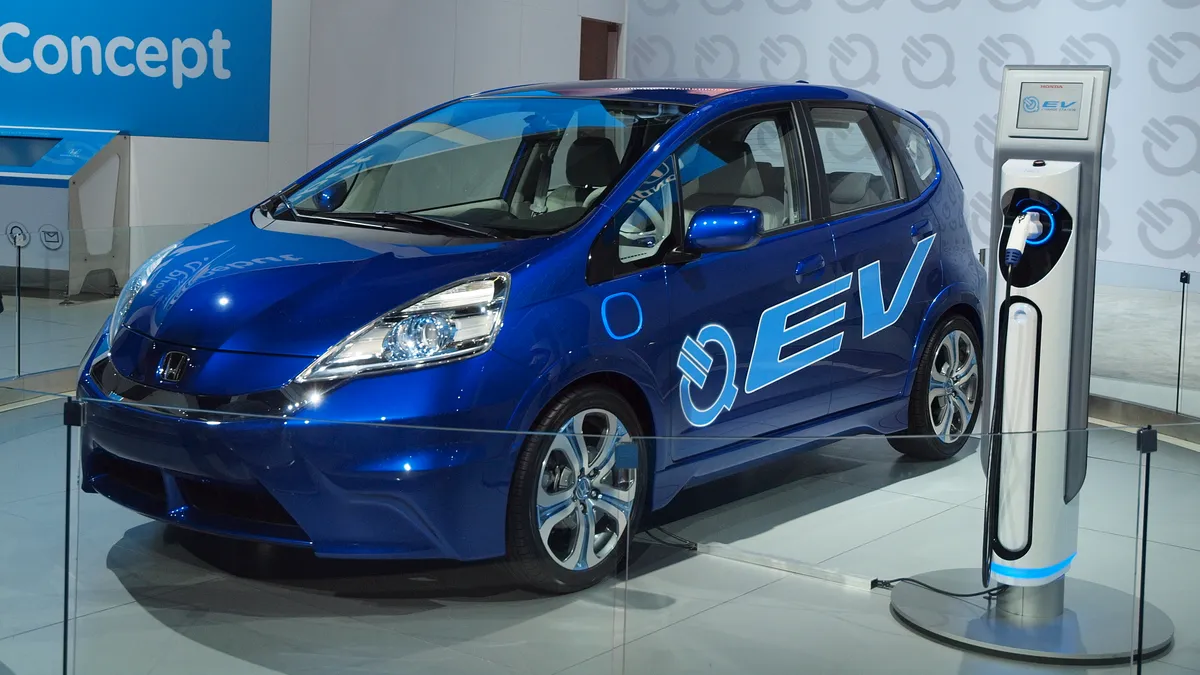Dive Brief:
-
Integrating battery energy storage into electric vehicle (EV) charging stations is one solution to the need for faster charging and a push to avoid peak demand charges, according to a Guidehouse Insights report released Thursday.
-
Consumer EV owners in Western states prone to wildfire-related blackouts also are attracted to the sense of security that residential energy storage can offer, said Maria Chavez, a research analyst for Guidehouse Insights.
- However, energy storage for EV charging must compete with other peak load solutions like time-of-use (TOU) price signaling and directly managed charging, said J. Michael Hagerty, senior associate with The Brattle Group.
Dive Insight:
EV charging stations with battery storage systems can make EV charging more cost effective by drawing energy from the grid during low-demand periods and releasing power to charge EVs during peak-demand periods, according to a Guidehouse Insights report.
The desire for cost-effective charging technology is driving commercial & industrial adoption of energy storage for electric vehicles (ESEV), according to Chavez, while resiliency concerns are driving consumer adoption.
"Consumers want that extra sense of security with separate energy storage in case of power outages, as well as being able to power their cars," Chavez said.
By keeping demand charges low, ESEV can make fleet electrification more attractive for the commercial & industrial market, according to Chavez.
ESEV also can enable used EV batteries to be repurposed for a "second life" as energy storage for stationary charging stations. "One EV battery may be all you need for short bursts of fast charging in order to keep up with the storage needs for one port," she said.
To maintain low costs and high efficiency and make decisions about storage requirements will require "smart" analytics to understand the times of day that charging ports are used, according to Chavez.
Where charging infrastructure lags behind EV adoption, mobile EV charging will help meet the rising demand for charging capabilities, Chavez said. Rather than being a niche service, mobile charging may one day overtake the capacity of stationary charging.
However, energy storage must compete with other approaches to avoid the peak load impacts of charging EVs, Hagerty said. In addition to price signaling through TOU rates, utilities are exploring direct managed charging programs, where EV owners allow utilities to choose when a car is charged.
Energy storage could be the most manageable approach to dealing with demand charges at public fast-charging stations, Hagerty said. However, most public charging stations currently have high upfront costs and low utilization. ESEV may not make sense for all developers and operators of public charging infrastructure.
Hagerty agreed that developers will need to perform analyses to determine whether the additional cost of energy storage could be recovered by avoiding demand charges.













